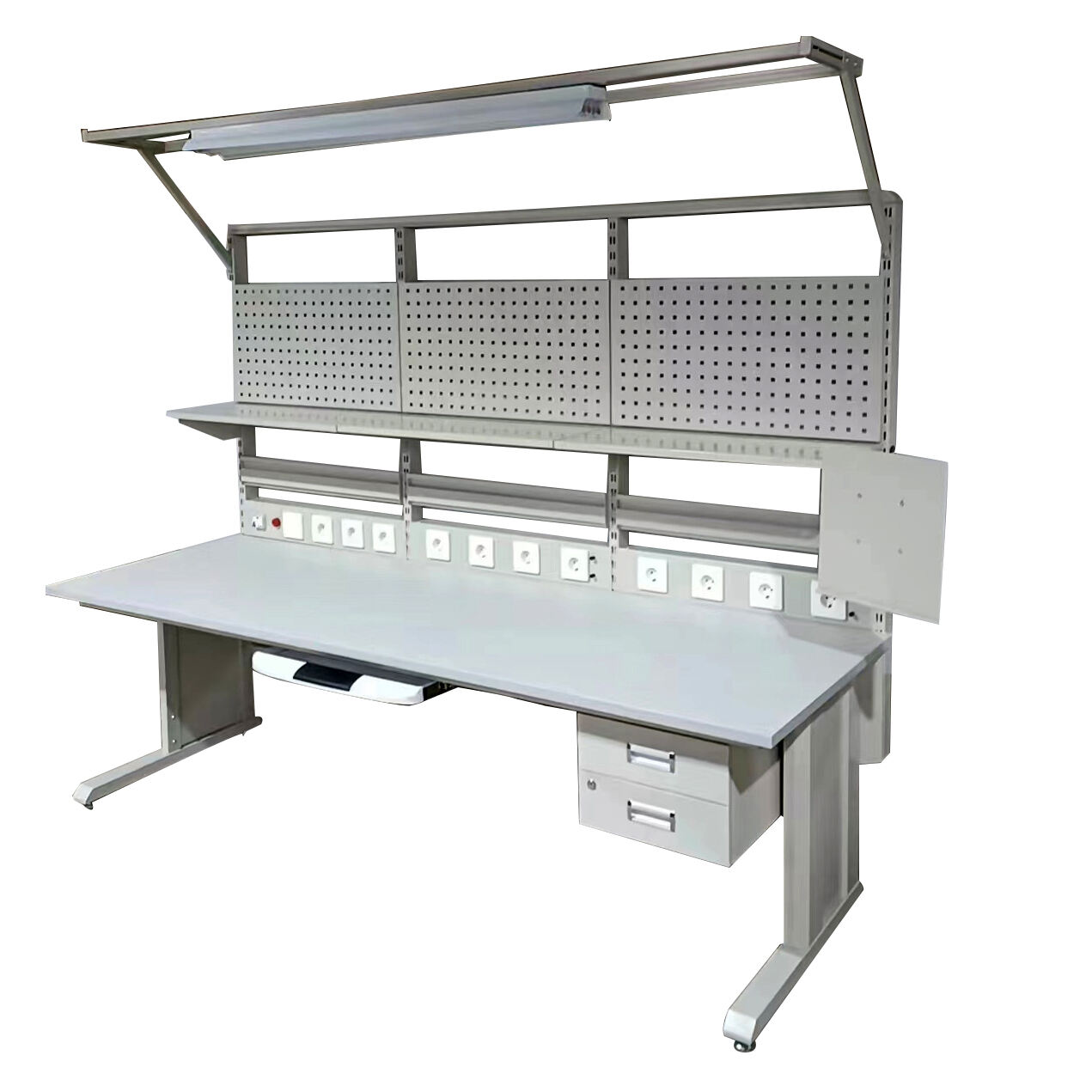Sensible electronic components and systems undergo major damage when subject to electrostatic discharge (ESD). Grounding systems installed in ESD workstations function to control electrostatic charges. The study investigates grounding system importance in ESD workstations by discussing direct as well as indirect grounding techniques and copper wire requirements with specific details about testing and maintenance procedures.
Direct vs. Indirect Grounding Methods
All grounding methods divide into direct techniques as well as indirect approaches. The end goal of both static electricity discharge techniques remains the same but each method is distinct regarding execution tools and operational benefits and drawbacks.
Direct Grounding
A direct electrical connection leads the workpiece to the earth through direct grounding systems. The connection of ESD mats and other conductive elements to workshop hardware requires attachment to active grounding points to complete the process. Organizations choose this method when operating areas require top safety standards along with maximum efficiency.
Using direct grounding provides cost-effective and efficient system operations because of its simple implementation. Ground connections that run directly from workstations will discharge static charges in less than an instant. Workstation components remain protected against static-caused failures because of this technique which improves workstation safety standards.
The implementation of direct grounding brings its own set of implementation difficulties. Persisting ground loops represent the chief challenge since they generate unwanted noise which impacts the system operation. Design and setup processes need detailed attention to stop these problems from arising.
Indirect Grounding
Static charge transfer through intermediary pathways forms the basis of indirect grounding before transferring the charges to ground. The practice uses grounding buses or resistors to enhance system protection through this method. The extra pathway systems distribute static charges equally and decrease the possibility of component-damaging localized discharges.
The implementation of indirect grounding requires complex setup while providing better adaptability features to users. Control over discharging operations improves through this method which lets users adjust settings according to their individual operational needs. The circuit scheme of indirect grounding minimizes the generation of dangerous ground loops that direct grounding systems normally create.
Copper Wire Specifications
The performance quality of grounding systems depends mainly on selecting high-quality materials but specifically relies on using copper wire. Copper represents the prime material for grounding systems because it maintains excellent electrical conductivity and exhibits superior durability together with excellent resistance to corrosion. Different specifications apply to copper wire production because they determine how well the wire performs in its intended purpose.
Conductor Size
To obtain optimal performance the correct measurement of copper wire stands as essential. AWG stands for American Wire Gauge which is the standard method for wire dimension classification. The size of electrical conductors measured through AWG numbers defines both resistance level and maximum allowable current capacity. The selection of perfect wire dimensions remains essential because the grounding system needs to manage the peak electric discharges.
Insulation
Insulation is another important consideration. The workstation insulation needs to endure all possible physical impacts while maintaining strength against normal environmental elements. Insulated wires safeguard the electrical performance by stopping accidental contact and maintaining the electrical circuit.
Stranding and Flexibility
The utilization of stranded copper wire instead of solid wire results in improved working properties during installation of complex electrical setups. The trade-off involves minimal resistance increase which remains unnoticeable when weighing it against the substantial advantages of the system.
Testing and Maintenance Protocols
A grounding system loses its effectiveness because of three factors: natural wear and tear, exposure to environmental elements and misuse by users. The system effectiveness demands routine testing protocols as well as maintenance procedures because they ensure the system preserves its operational capacity.
Visual Inspections
Visual checks that occur frequently serve as the primary means to prevent failures in grounding systems. Inspection personnel need to examine wires and grounding points as well as connectors for damage and corrosion and wear signs.
Continuity Testing
Continuity tests should be regularly made to ensure that there is a way for static fees to reach the ground. This test can be conducted using a multimeter to measure resistance to grounding routes. Low resistance values indicate a good grounding connection, while high resistance values may indicate potential issues.
Performance verification
Specific equipment such as ESD simulators can be used for performance verification. These devices simulate electrostatic discharge to test the capacity of the grounding system to handle real-world ESD events.
Documentation and records
It is paramount to maintain detailed records of all inspections, tests and maintenance activities. This ensures that any identified issues can be tracked and can be immediately addressed and provides a history of system performance over time.
Finally, grounding systems play an indispensable role in an effective ESD workstation. Understanding the nuances of direct and indirect grounding methods, following proper copper wire specifications, and implementing rigorous testing and maintenance protocols, any ESD can ensure the longevity and reliability of safety measures.







